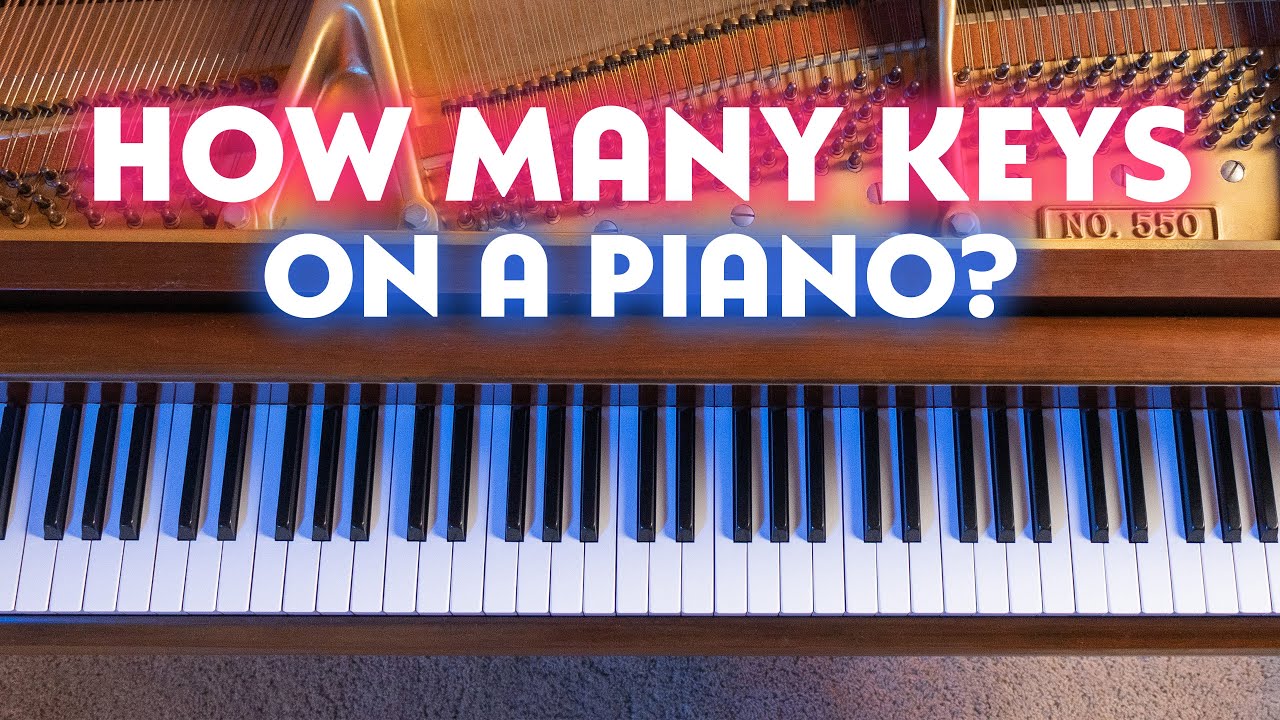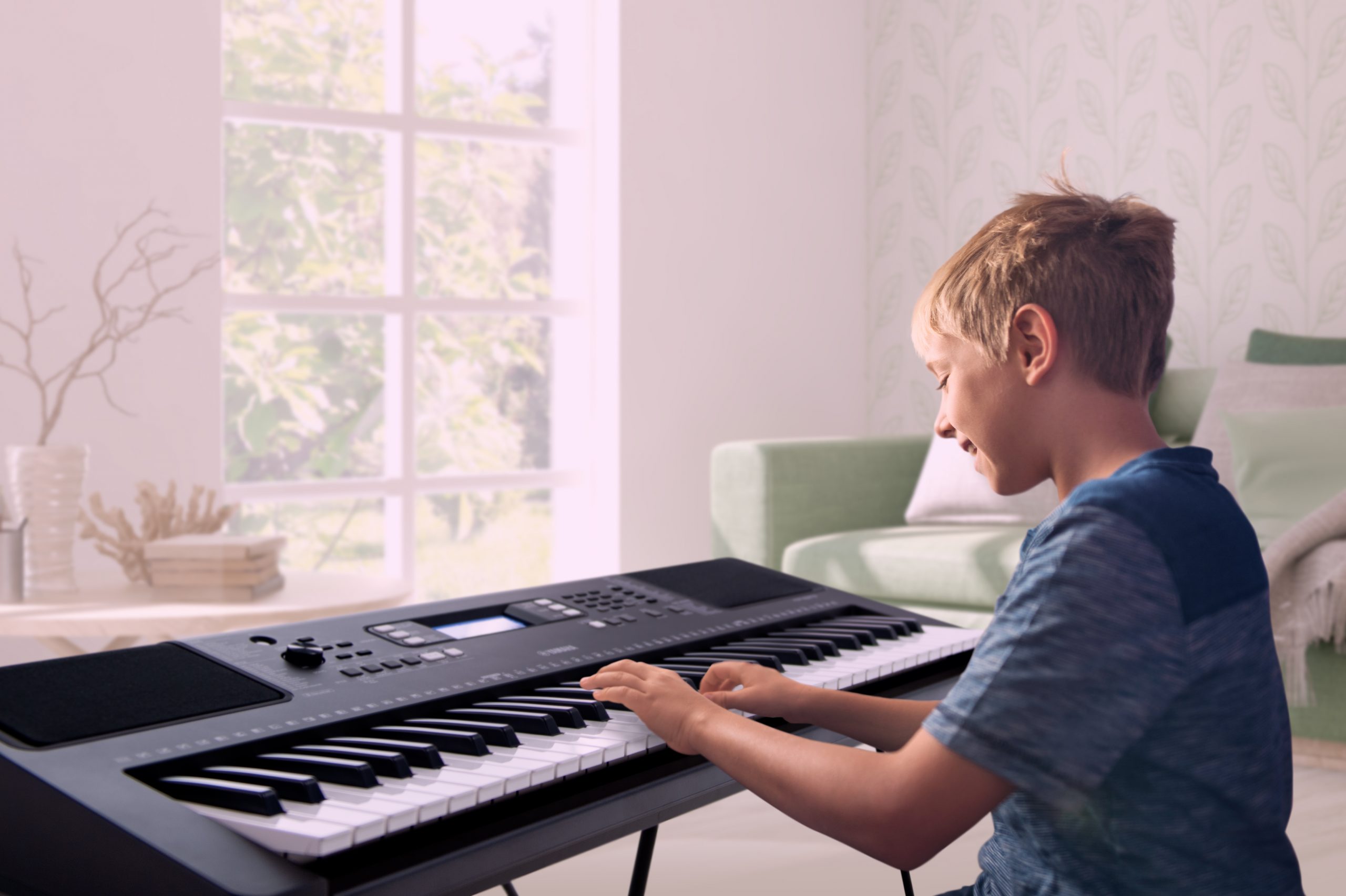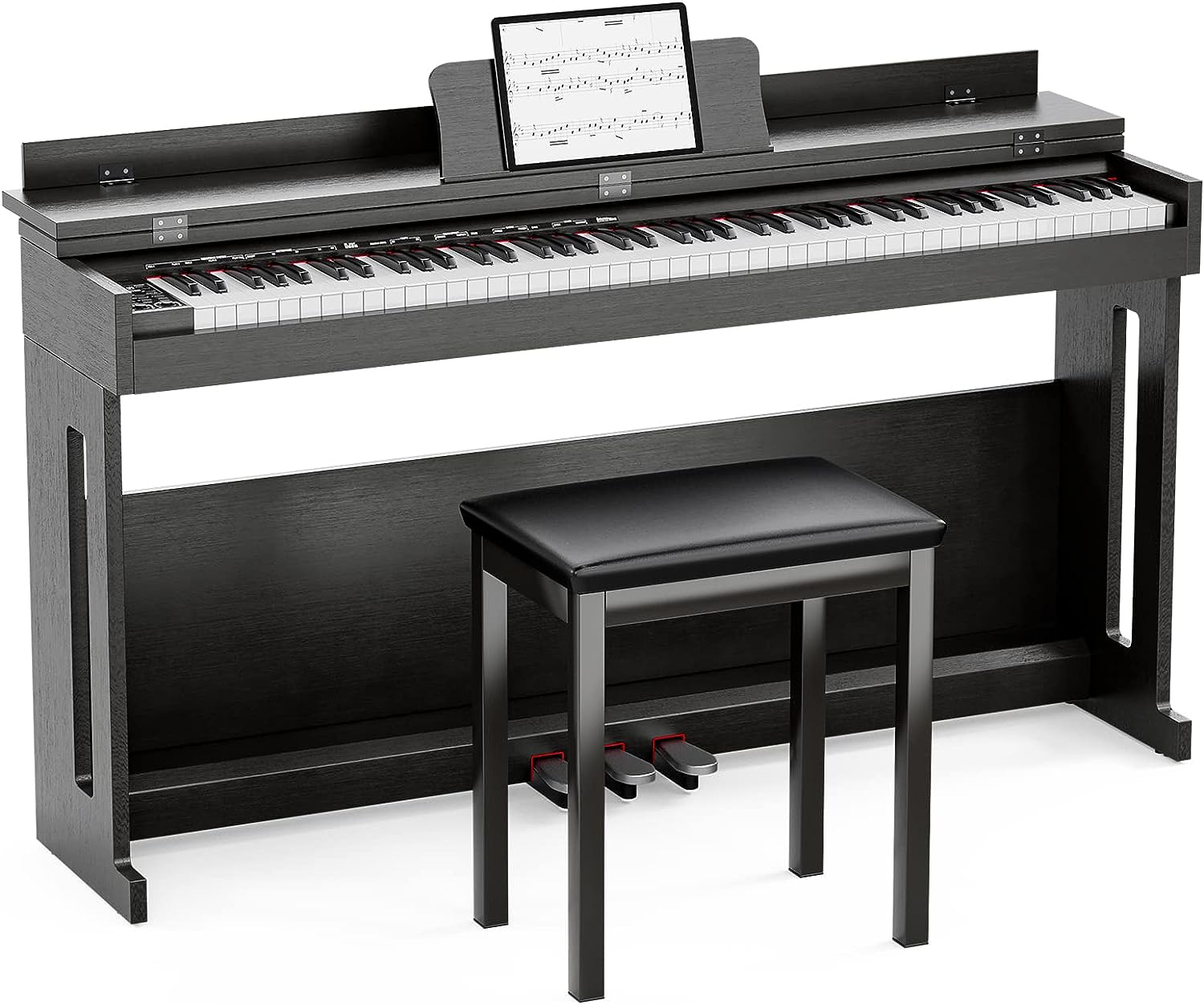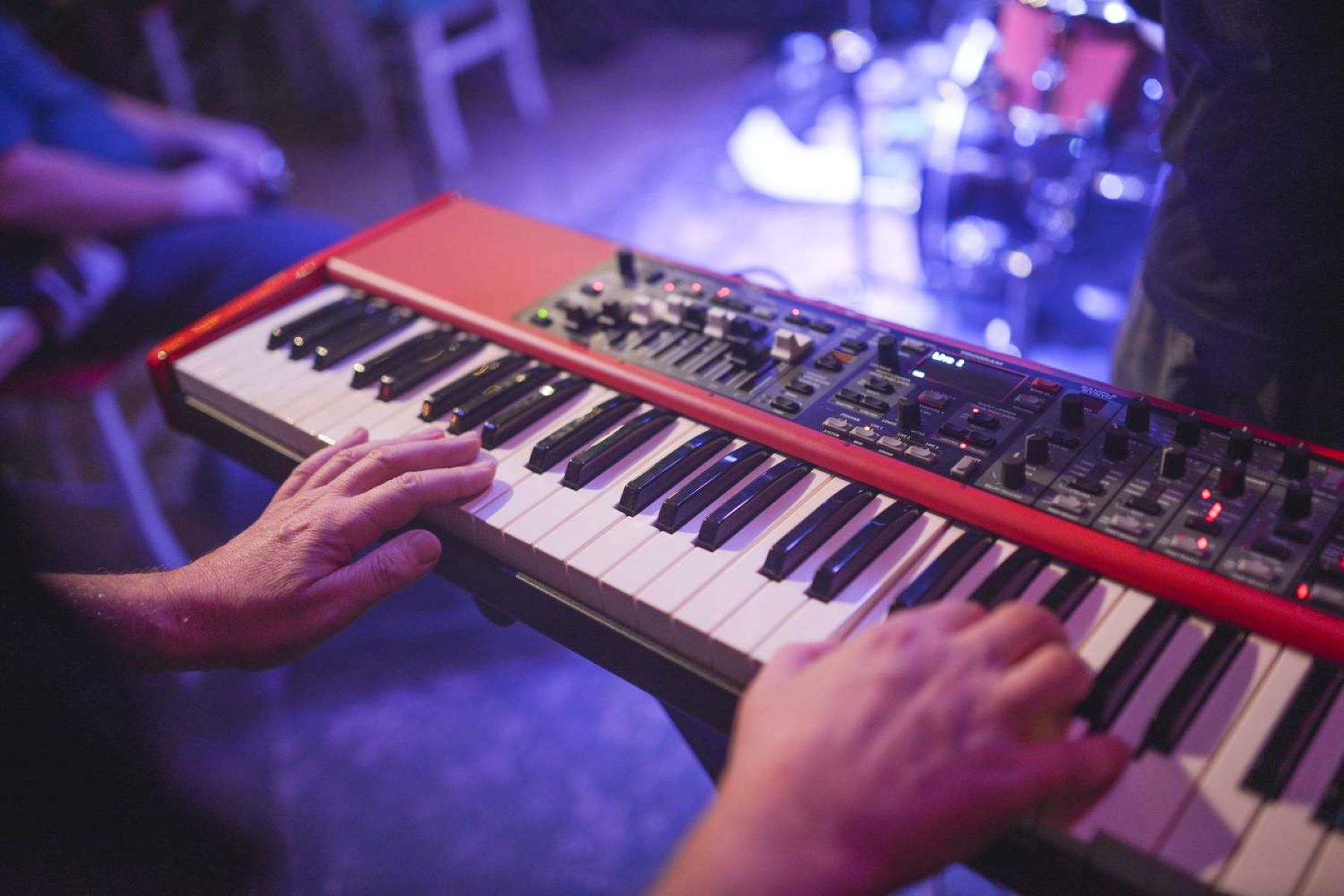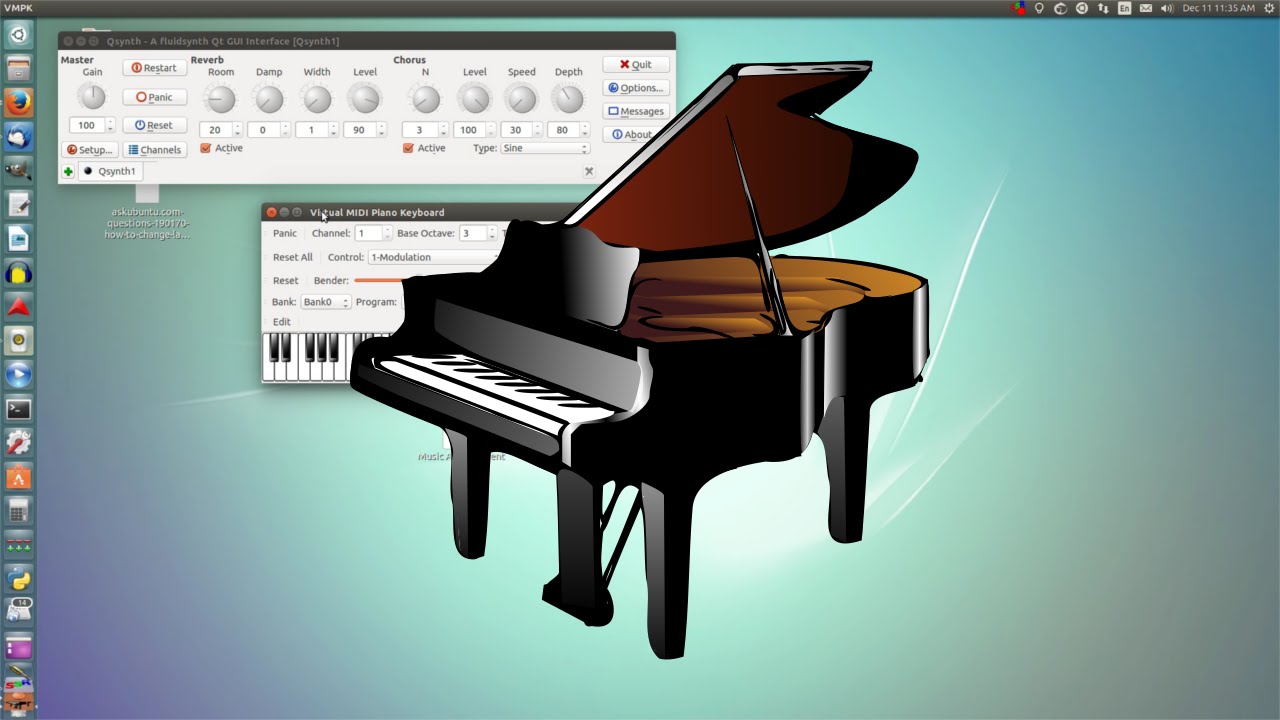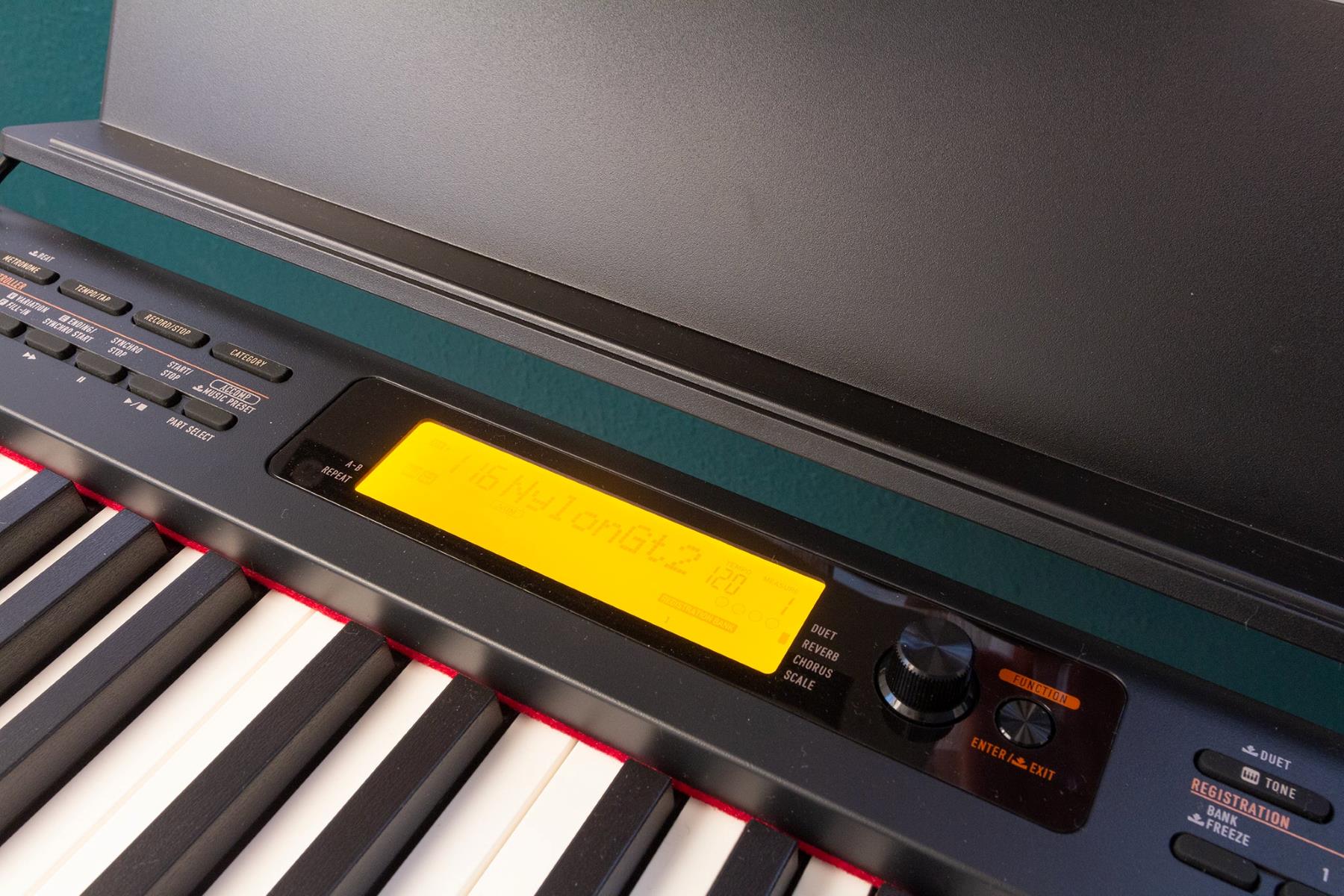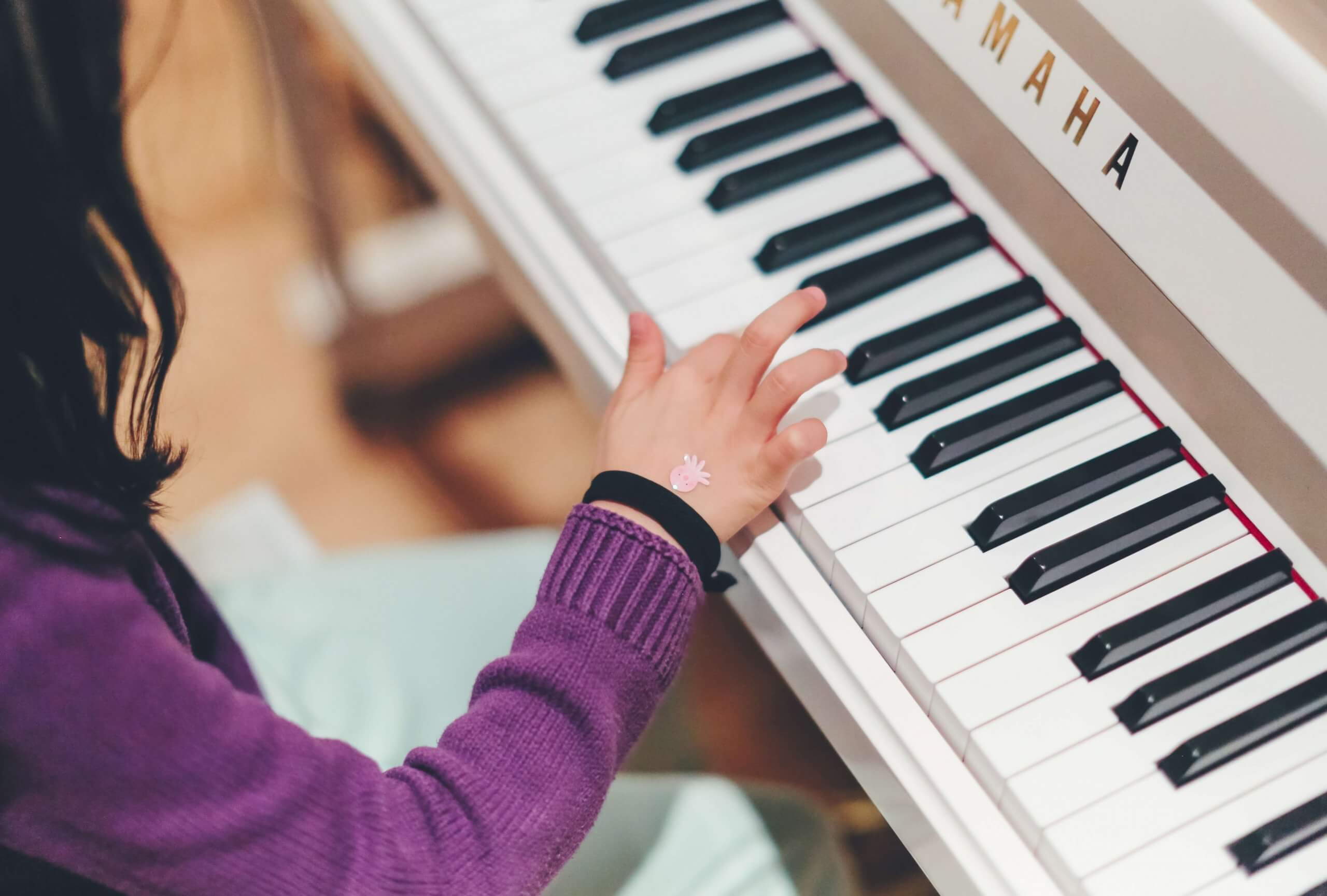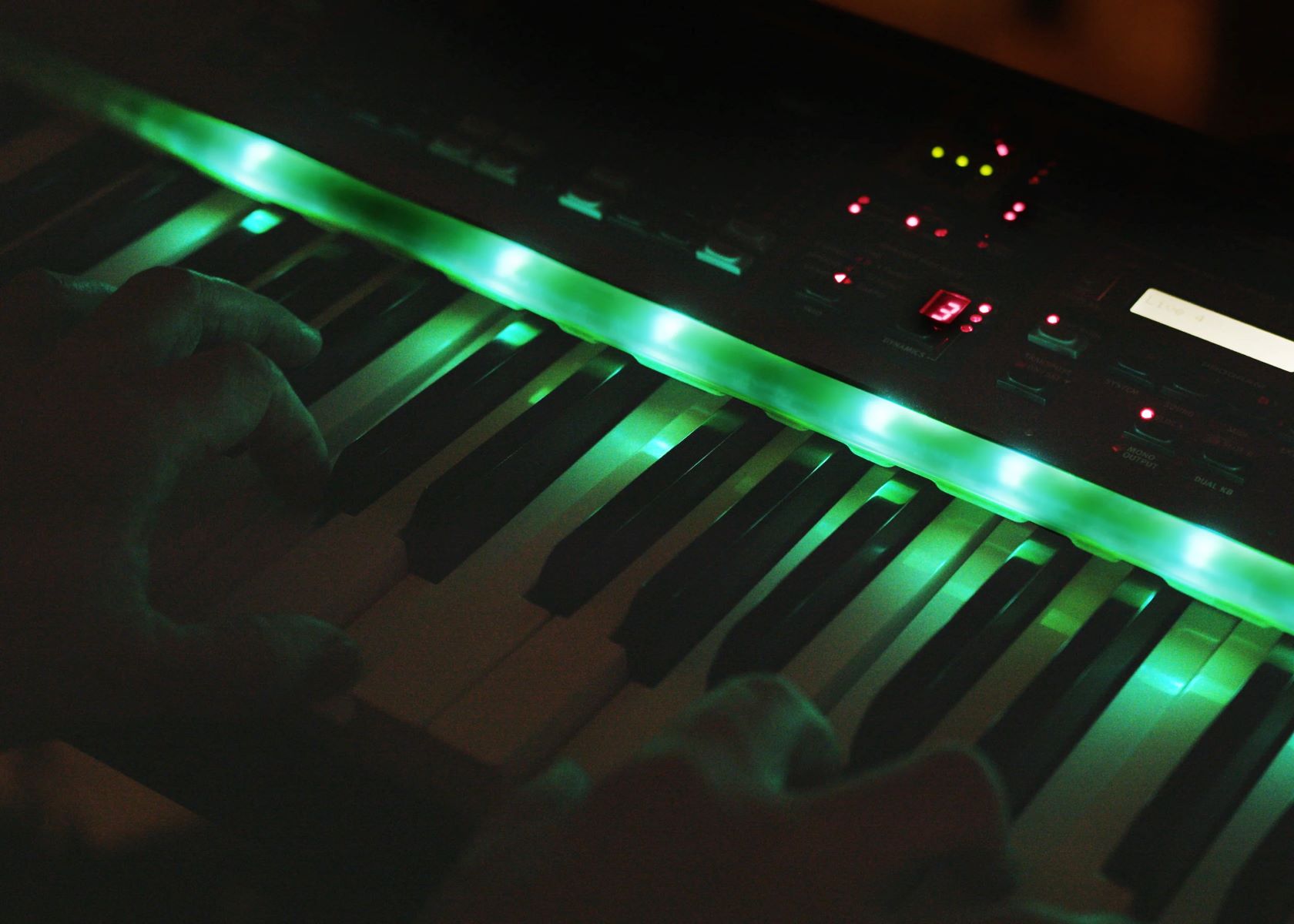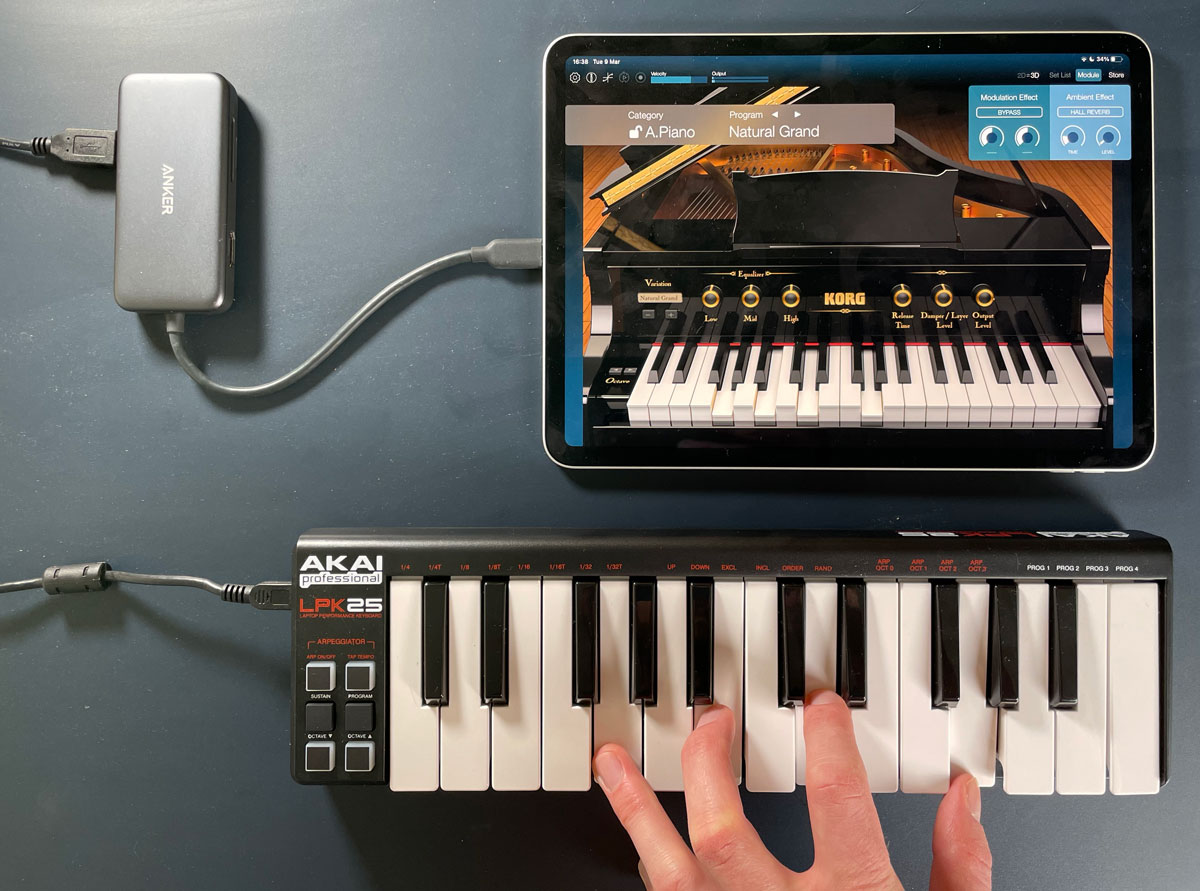Introduction
When it comes to playing the keyboard piano, one may often wonder how many keys are on a typical keyboard piano. Whether you’re a beginner just starting to explore the world of music or an experienced musician looking to expand your skills, understanding the anatomy of a keyboard piano is essential.
A keyboard piano is a versatile and widely used musical instrument that offers a range of sounds and notes. It is composed of a series of keys that correspond to different pitches, allowing players to create beautiful melodies and harmonies. From classical compositions to modern pop tunes, the keyboard piano is a popular choice for musicians of all ages and skill levels.
In this article, we will delve into the fascinating world of the keyboard piano and explore the number of keys you can expect to find on a standard keyboard piano. Additionally, we will discuss other variations of keyboard pianos that offer different numbers of keys to cater to various preferences and needs.
Are you ready to embark on this musical journey with us? Let’s dive in and discover the keys to unlocking the world of keyboard pianos!
Anatomy of a Keyboard Piano
Before we delve into the specific number of keys on a keyboard piano, let’s first explore the anatomy of this fascinating instrument. A keyboard piano consists of several main components that work together to create the beautiful and diverse sounds it produces.
First and foremost, the most notable part of a keyboard piano is, of course, the keys. These keys are typically made of plastic and are arranged in a linear fashion. When a key is pressed, it triggers a mechanism that produces the corresponding sound, depending on the pitch and tone of the key.
Another important component of a keyboard piano is the keyboard itself. The keyboard is an array of keys that span the entire width of the instrument. On a standard keyboard piano, the keys are traditionally divided into two colors: white and black. The white keys represent the natural notes of the musical scale, while the black keys, also known as the sharps and flats, represent the semitones and intermediate notes between the natural notes.
Beneath the keys, there is a mechanism known as the action. The action consists of a system of levers, springs, and hammers that help to produce the sound when a key is pressed. When a key is pressed, the action mechanism activates a hammer that strikes the corresponding string or string-like element within the keyboard piano, creating the desired sound.
Additionally, a keyboard piano is equipped with various controls and features that allow for customization and optimization of the sound. These may include volume control, tone control, pedal options, and the ability to change the instrument’s settings to mimic different sounds and musical styles.
Now that we have a basic understanding of the anatomy of a keyboard piano, let’s explore the number of keys you can find on a standard keyboard piano, as well as other variations that offer different key configurations to suit different preferences and needs.
Standard Keyboard Piano
When we refer to a standard keyboard piano, we are typically referring to the traditional design that is widely recognized and used by musicians around the world. This type of keyboard piano has a specific number of keys that has become the industry standard for decades.
A standard keyboard piano typically consists of 88 keys in total. These keys are arranged in a specific pattern, starting from the lowest note on the left and progressing in a linear fashion to the highest note on the right. The keys are divided into groups of white and black keys, with a repeating pattern of two black keys followed by three white keys, and so on.
The 88 keys on a standard keyboard piano span a wide range of pitches and notes, allowing musicians to play a vast repertoire of music across various genres and styles. From classical compositions composed by the likes of Mozart and Beethoven to popular tunes from contemporary artists, the 88-key range provides the versatility and flexibility needed to express musical creativity.
Each key on a standard keyboard piano represents a specific pitch, including all the natural notes (A, B, C, etc.) as well as the sharps and flats. As you progress from left to right on the keyboard, the pitch of the notes increases. The low keys produce deep, bass-like sounds, while the high keys create higher-pitched tones.
Having 88 keys on a standard keyboard piano allows for a wide range of expression and musical possibilities. It enables musicians to play complex melodies, perform intricate chord progressions, and explore the full potential of their musical compositions. Whether you’re a beginner learning the basics or an advanced player mastering advanced techniques, the 88-key standard keyboard piano is the ideal instrument to support your musical journey.
Now that we’ve explored the standard keyboard piano and its 88 keys, let’s take a look at other variations of keyboard pianos that offer different numbers of keys to cater to various preferences and needs.
Number of Keys on a Standard Keyboard Piano
As mentioned earlier, a standard keyboard piano typically consists of 88 keys. This number has been widely adopted as the industry standard for keyboard pianos and is commonly found in both acoustic and digital pianos. The 88-key configuration provides a broad range of pitches and notes, allowing musicians to explore various musical styles and genres.
The 88 keys on a standard keyboard piano are evenly divided between white and black keys. The white keys represent the natural notes of the musical scale, including A, B, C, D, E, F, and G. These natural notes are separated by a whole step, except for the B and C notes and the E and F notes, which are separated by a half step.
The black keys, also known as the sharps and flats, are placed between the white keys. These keys represent the semitones and intermediate notes between the natural notes. By incorporating the black keys into the keyboard layout, musicians can access a wider range of pitches and create more complex melodies and harmonies.
The 88-key standard keyboard piano layout has become the benchmark for pianists and keyboard players worldwide. It offers the full range of notes needed to play a wide variety of musical compositions, from beautifully melodic pieces to technically challenging works. Musicians of all levels, from beginners to professionals, benefit from the comprehensive range of the 88 keys.
When choosing a keyboard piano, it is important to consider the number of keys it offers. While the standard 88-key configuration is highly recommended for those who want to fully explore their musical skills, there are other options available for those with different needs and preferences.
Now that we have explored the number of keys on a standard keyboard piano, let’s examine other variations of keyboard pianos that offer different key configurations to cater to various musicians’ specific requirements and preferences.
Other Variations of Keyboard Pianos
While the standard 88-key configuration is the most common and widely used, there are other variations of keyboard pianos that offer different key configurations to suit diverse preferences and needs. These variations cater to musicians who may require a more compact or portable instrument or have specific musical requirements.
One popular variation is the compact keyboard piano. These keyboards typically have fewer keys than the standard 88-key piano, ranging from 61 to 76 keys. The compact design allows for easier transportation and storage, making them ideal for musicians on the go or those with limited space. While they may have fewer keys, they still provide a wide enough range to play most musical compositions.
Another variation is the portable keyboard piano, which is designed for maximum portability and convenience. These keyboards are often lightweight and compact, with 49 to 61 keys. They are popular among beginners, students, and musicians who travel frequently and need a keyboard piano that can be easily carried around. Portable keyboards often come with built-in speakers, adjustable sound settings, and a variety of preloaded sounds and rhythms.
Additionally, there are electronic keyboard pianos with fewer keys, specifically designed for certain types of music or specific musical techniques. Some electronic keyboards, known as synthesizers, may have 61 keys and are focused on creating and manipulating electronic sounds. These keyboards are commonly used in electronic music production and live performances.
Furthermore, there are MIDI keyboard controllers, which are not standalone keyboards but rather a controller that connects to a computer or other external devices. MIDI controllers come in various sizes, with options ranging from 25 keys to 88 keys. They are predominantly used in music production and recording studios, allowing users to control virtual instruments and software.
These variations of keyboard pianos offer different key configurations to cater to a wide range of musical preferences and requirements. Whether you need a compact and portable option or a specialized keyboard for specific genres, there is a keyboard piano available to suit your needs.
Now that we have explored the different variations of keyboard pianos, each offering a unique number of keys, let’s move on to the next section to conclude our discussion on this fascinating instrument.
Compact Keyboard Pianos
Compact keyboard pianos are a popular choice for musicians who prioritize portability and space efficiency. These keyboards are designed to have a smaller footprint while still providing enough keys to play a wide range of musical compositions. A compact keyboard piano typically has fewer keys than the standard 88-key configuration.
The number of keys on a compact keyboard piano can vary, with common options ranging from 61 to 76 keys. While these keyboards have fewer keys, they still offer a sufficient range to play most musical compositions, including melodies, chords, and harmonies. The keys on a compact keyboard piano are laid out in the same pattern as the standard keyboard, providing a familiar and comfortable playing experience.
One of the main advantages of a compact keyboard piano is its portability. The smaller size and lighter weight make it easy to transport, whether you’re heading to a rehearsal, a gig, or simply moving it around your home. This makes compact keyboards ideal for musicians who are frequently on the go or who have limited space available.
In addition to portability, compact keyboard pianos often come with a range of features and functions. They may have built-in speakers, headphone jacks for private practice, MIDI connectivity for connecting to external devices, and a variety of preloaded sounds and instrument samples. Some models even offer additional features like recording capabilities, rhythm accompaniments, and learning tools.
Compact keyboards are also a popular choice for beginners and students who are just starting their musical journey. The smaller number of keys can make it easier for beginners to navigate and practice without feeling overwhelmed. As their skills progress, they can easily transition to larger keyboards or pianos with a full 88-key range.
Whether you’re a beginner, a traveling musician, or someone with limited space, a compact keyboard piano provides a practical and versatile solution. It offers the convenience of portability without compromising on playability and musical expression.
Now that we have explored the world of compact keyboard pianos, let’s move on to the next section to discuss another variation of keyboard pianos: portable keyboard pianos.
Portable Keyboard Pianos
Portable keyboard pianos are a fantastic option for musicians who require a highly portable instrument that can be easily transported and played in various settings. These keyboards are designed for convenience without compromising on functionality and playability.
A portable keyboard piano typically features a smaller number of keys compared to the standard 88-key configuration. The most common options range from 49 to 61 keys. While this may provide a slightly narrower range compared to larger keyboards, it still allows for playing a wide variety of musical compositions, melodies, and chords.
The key factor that sets portable keyboards apart is their compact and lightweight design. These keyboards are built with the needs of musicians who are constantly on the move in mind. They are easy to carry to rehearsals, performances, music lessons, or even while traveling. Their lightweight construction makes them ideal for musicians who require a portable instrument that can be transported with ease.
In addition to portability, portable keyboards often come equipped with a variety of features that enhance their versatility. These can include built-in speakers, headphone jacks for private practice, USB connectivity for connecting to computers and mobile devices, and a wide selection of instrumental sounds and effects. Some models may also offer rhythm accompaniments and learning functions to enhance the learning and playing experience.
Portable keyboards are popular among beginners and students as they provide a convenient and affordable entry point into the world of keyboard playing. The smaller number of keys can be less overwhelming for beginners, allowing them to focus on learning different techniques and developing their musical skills. As they progress, they may choose to upgrade to larger keyboards or pianos with a fuller range of keys.
Professional musicians and experienced players also appreciate portable keyboard pianos for their versatility. They can use them as a secondary instrument for performances, practice sessions on the go, or as a MIDI controller to connect and control music software and virtual instruments.
Overall, portable keyboard pianos offer the perfect balance between portability and functionality. They provide musicians with the flexibility to play and practice wherever they go, without sacrificing the quality of their musical experience.
Now that we have explored the world of portable keyboard pianos, let’s move on to the next section to discuss another type of keyboard piano: electronic keyboard pianos with fewer keys.
Electronic Keyboard Pianos with Fewer Keys
Electronic keyboard pianos with fewer keys are a specialized variation of keyboard pianos that cater to specific musical needs and genres. These keyboards often prioritize certain functions and features over having a full range of keys, making them ideal for certain types of music and playing styles.
The number of keys on electronic keyboard pianos with fewer keys can vary. Some models offer 61 keys, while others may have even fewer, ranging from 25 to 49 keys. The reduced number of keys allows for a more compact and streamlined design, making these keyboards portable and easy to use in various musical contexts.
One common type of electronic keyboard piano with fewer keys is the synthesizer. Synthesizers are renowned for their ability to create and manipulate electronic sounds. With their fewer keys, they offer a focused range for experimenting with different tones, effects, and textures. These keyboards are often used in electronic music production, live performances, and sound design.
Electronic keyboard pianos with fewer keys are also popular for specific music genres that require a more limited range. For example, certain styles of music, such as jazz or blues, may predominantly utilize a smaller range of keys. Keyboard players in these genres can benefit from the streamlined design and focus of keyboards with fewer keys to easily play and improvise in these styles.
Despite having fewer keys, these electronic keyboard pianos often compensate for the reduced range with a variety of additional features. They may have built-in sound libraries with a wide assortment of instrument sounds, including pianos, strings, organs, and synthesizer tones. They may also offer advanced sound editing capabilities, modulation controls, and performance features like arpeggiators and sequencers.
Furthermore, some electronic keyboards with fewer keys serve as MIDI controllers. These keyboards are designed to connect to computers or other external devices, allowing musicians to control virtual instruments and music software. With their compact size and focused range, MIDI controllers provide an efficient and versatile tool for music production, composition, and recording.
Electronic keyboard pianos with fewer keys offer a specialized approach to keyboard playing, catering to specific musical needs and genres. Whether you’re a synthesizer enthusiast, a specialized genre musician, or a music producer, these keyboards provide the tools and features necessary to create unique and expressive musical compositions.
Now that we have explored electronic keyboard pianos with fewer keys, let’s move on to the concluding section to wrap up our discussion on the different variations of keyboard pianos.
Conclusion
The world of keyboard pianos is diverse and exciting, offering a range of options to suit musicians of all preferences and needs. From the standard 88-key configuration to compact and portable keyboards, as well as electronic keyboards with fewer keys, musicians are empowered with choices that cater to their unique musical journeys.
Understanding the anatomy of a keyboard piano is essential in order to fully appreciate the instrument and its capabilities. The keys, action, and controls all work together to create beautiful melodies, harmonies, and a wide range of musical expressions.
The standard keyboard piano with its 88 keys has become the industry standard and provides the full range needed to play various musical compositions. Musicians have the freedom to explore different genres and styles, creating intricate melodies and complex chords.
For those seeking portability and space efficiency, compact and portable keyboard pianos offer convenience without compromising playability. These keyboards have fewer keys but still provide a satisfactory range of notes, making them ideal for musicians on the go or those with limited space.
Electronic keyboard pianos with fewer keys cater to specific musical needs and genres, such as electronic music production or specialized playing styles. These keyboards may offer advanced sound editing capabilities and a wide array of instrument tones, providing unique creative possibilities.
Regardless of the variation chosen, keyboard pianos serve as a versatile and expressive instrument that allows musicians to delve into the world of music and share their artistic visions with the world.
So, whether you’re a beginner just starting your musical journey or an experienced player looking to expand your skills, the number of keys on a keyboard piano should be considered alongside your specific musical needs. Choose the keyboard piano that resonates with your style, and let the keys unlock the magic of music.







